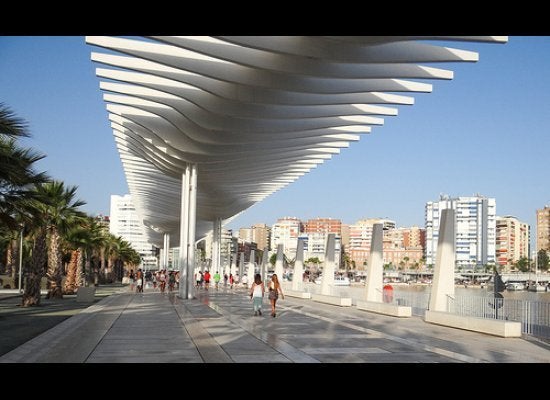By Barbara Diggs, InternationalLiving.com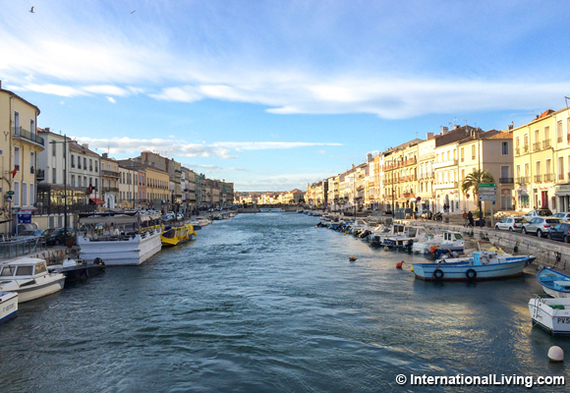
Grand Canal, Sete, France
Of the handful of canal towns that fancy themselves the "Venice of France," the port town of Sète, in the Languedoc region on France's Mediterranean coast, comes closest to deserving that title. Its blue-green canals are stunning, wide, and elegant. And, as in Venice, they are an integral part of daily life.
But, swap Venice's sleek gondolas for Sète's workaday fishing boats. And instead of multi-million-dollar edifices lining the canals, expect to see rows of lovely, pastel-hued, 19th-century buildings with rusting, wrought-iron balconies and flaking façades.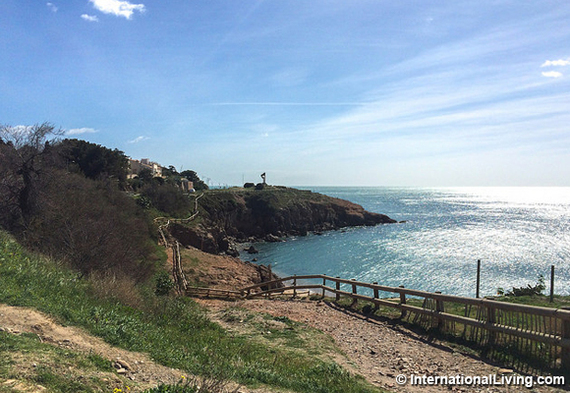
The Coast of Sete, France
Despite the beauty of Sète's gleaming waterways, the old quarter's graceful architecture, and lilac-colored sunsets that make you catch your breath, this is a working-class fishing town before anything else. And it's not apologizing for it. So if you're looking to spend a couple of days in an authentic French Mediterranean town with nice beaches, great seafood, and a few hidden treasures up its sleeve, this is it.
Most towns in the south of France can trace their histories back to medieval times or even to ancient Rome. But Sète is fairly young--it was established in 1666 as a commercial port for the Languedoc. However, it only started to grow in the 18th century, when harbor workers from around the region settled along the peninsula and, later, up Sète's hill, Mont St-Clair.
While foreigners mostly know Sète for its port and canals, the French know that Sète also has an eight-mile stretch of unspoiled, golden-sand beach right on the Mediterranean. And for this they come in droves. The beaches start in a neighborhood called La Corniche, an area rife with pink high-rises only a hundred yards or so from the sand.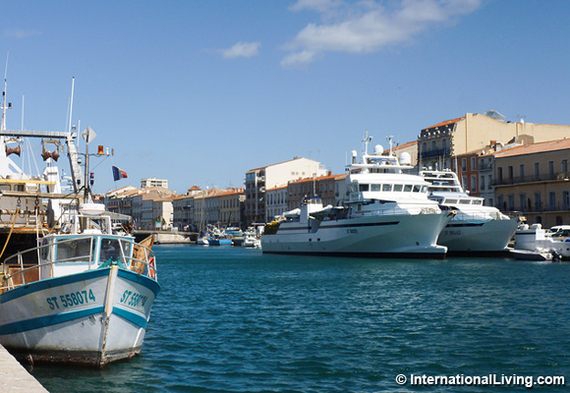
Boats in the Grand Canal, Sete, France
But Sète's biggest and most exciting summertime attraction is its traditional water jousting tournament. In the joust, two teams of oarsmen (mostly fishermen) in rowboats keep their boats moving steadily on the Canal Royal, while two opposing jousters try to knock each other from their boats with a long pole. This has taken place in Sète's canals each year since 1666.
To explore the depths of Sète's charm at any time of year, tear yourself away from the weathered splendor of Sète's old port and head to the narrow streets a few blocks west of the main canal. For much of the year this area is almost devoid of tourists.
The cobbled square of Place Léon Blum, which lies just across from the dusky-pink Town Hall, is a great place to enjoy a Mediterranean sunset. The fading sunlight slants through the plane trees lining the square. The fountain--featuring a huge, writhing bronze octopus--lies at its center. But what catches the eye is a wall painting of a bright yellow cat in a white suit, grinning broadly. He holds a sign that reads: M. Chat. C'est toi. (Mr. Cat. It's you.)
You'd be forgiven for thinking this cat is merely graffiti, but it's actually part of Sète's growing open-air, street-art museum. Throughout the town, you'll find more than a dozen vibrant and imaginative street paintings created by artists participating in Sète's annual art and sound festival. Each year the museum expands, as the festival's featured artist leaves a new painting on a wall within town.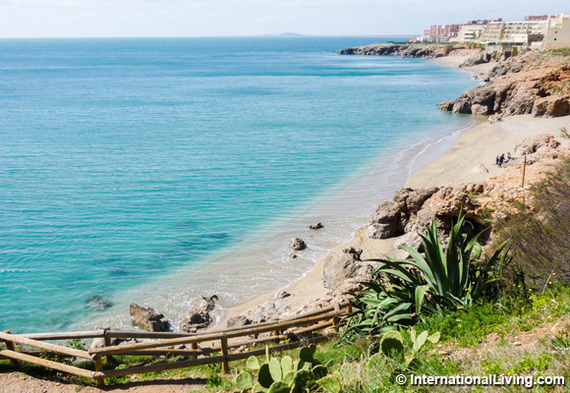
Sete Beach, France
In the modern art world, Sète is known for being progressive. Check out the Musée International des Arts Modestes (MIAM), a canal-side museum created from a converted wine warehouse. It's packed with funky, electric-colored works made from everyday objects (entry $6). If you prefer more traditional art, head to the Musée Paul Valéry, which has an art collection spanning from the 19th century to today, as well as artifacts marking Sète's history. (Entry is about $8.50.) This museum, set at the top of Mont St-Clair, also offers a bird's-eye view of Sète's Sailor's Cemetery (cimetière marin), as well as dreamy views of the town's red rooftops and the vast blue Mediterranean beyond. Even if you aren't into art, the trek up Mont St-Clair for the view is a must.
A block away from Monsieur Chat is the iron-and-glass structure of Les Halles, Sète's food market. Every morning from 6 a.m. to 1 p.m., scores of people meander through its dozens of stalls. They select from mounds of fruits, vegetables, meats, local wines, and, of course, seafood, much of which is fresh from the Mediterranean.
After you've picked up some goodies at the market, head over to Park Simone Veil for a picnic. This lovely and whimsical park, whose entrance is guarded by a fierce marble statue of Neptune perched on a rocky throne, is a small wonder. Full of curving paths, its thick-trunked palm trees, small green ponds, emerald lawns, and moss-covered grotto with a waterfall make you feel as though you've found an oasis in the middle of town. It's the perfect spot to relax, reflect, and enjoy some Mediterranean seafood.
Although it's unquestionably touristy and a bit noisy from traffic, the strip of restaurants along the main canal (Canal Royal) allows you to soak up the sun and gaze at the fishing boats and colorful façades over a good meal. At Le Petit Pêcheur, I enjoyed half-a-dozen raw oysters and the local dish Rouille de Seiche à la Sètoise (juicy chunks of squid cooked in a tomato-based sauce). With a glass of white wine, the meal came to €13.90 (around $14.90).
On the advice of a local, I dined at Chez François, one of the few restaurants on the strip where you can actually watch the oysters being shucked. Chez François's oysters and grilled sole were indeed delightfully fresh and delicious. The higher quality reflects in the price, however: A three-course dinner will likely run €30 to €45 ($32 to $48) per person, without wine.
This article comes to us courtesy of InternationalLiving.com, the world's leading authority on how to live, work, invest, travel and retire better overseas.
More On This Topic
Europe's Top 5 Affordable Retirement Havens
Real Estate Gems in the South of France from $85,000
Europe on Sale: Buy Now While the Dollar Is Strong
Earlier on Huff/Post50:
